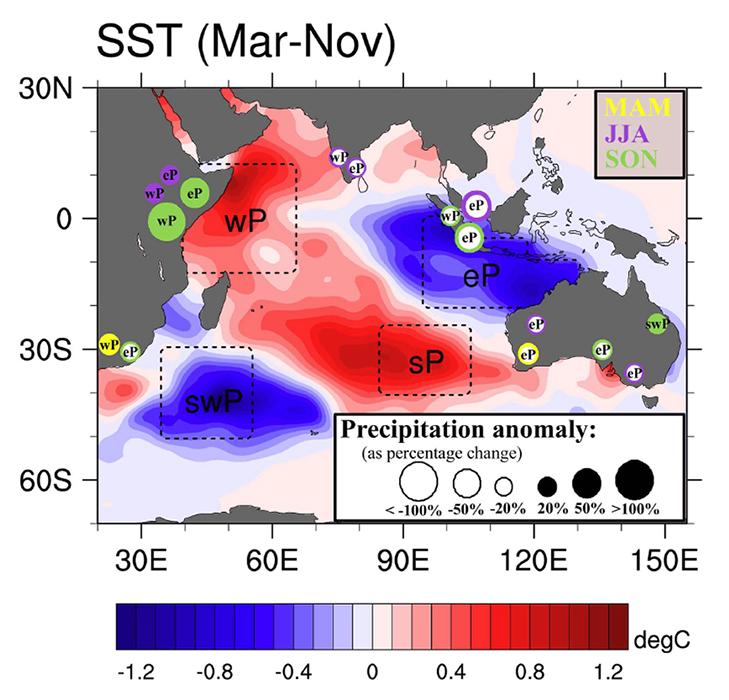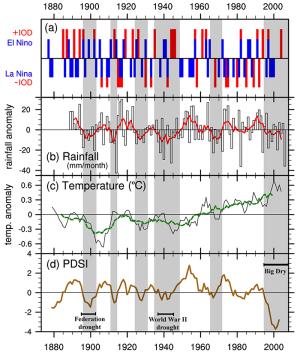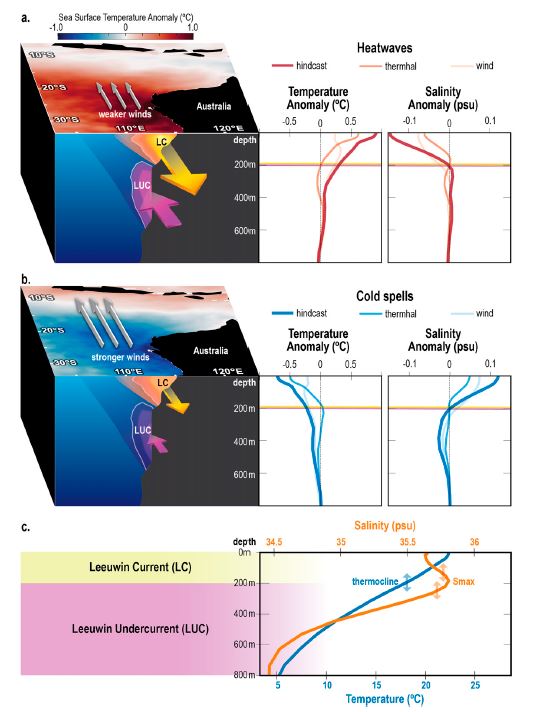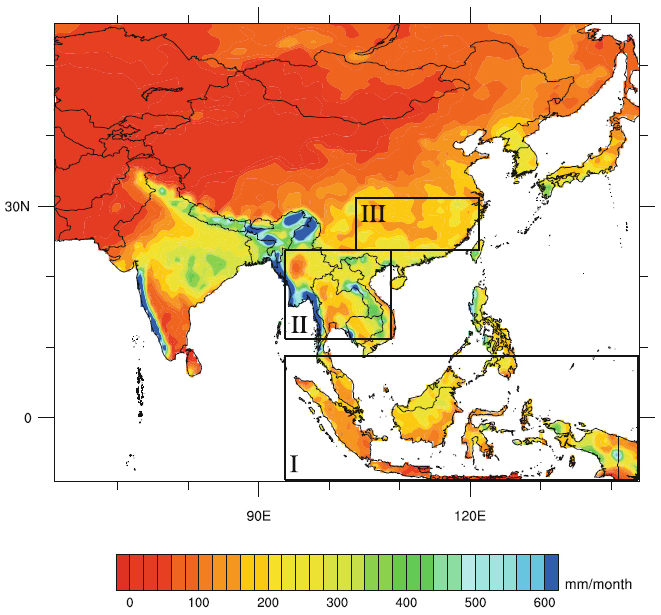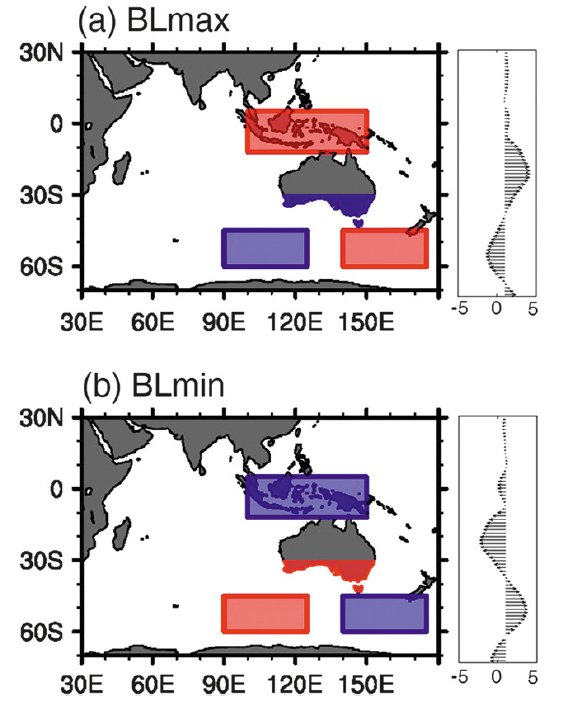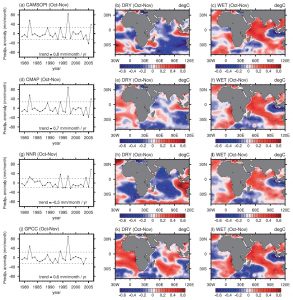Projects
Indian Ocean Variability & Regional Impacts
The importance of the Indian Ocean sea surface temperature (SST) anomalies in modulating regional climate has recently received increasing recognition. Surface variability has been implicated in widespread changes to precipitation around Indian Ocean rim countries, including East Africa, India, Indonesia, and Australia. Non-uniform warming of the Indian Ocean has recently been described and characteristics of the dominant mode of tropical Indian Ocean variability are suggested to be changing. These factors highlight the need for a better understanding of the mechanisms by which Indian Ocean variability modulates regional rainfall. This has major implications for seasonal rainfall forecasting and will ultimately aid in improvements to water and agricultural management.
Droughts and Floods in Australia
At the turn of the millennium, a large region of Australia was gripped by the most severe drought in living memory, the “Big Dry.” The ramifications for affected regions were dire, with acute water shortages for rural and metropolitan areas, record agricultural losses, the drying-out of two of Australia’s major river systems and far-reaching ecosystem damage. Yet the drought’s origins had remained elusive.
Extreme Climate Events and Ecosystem Impacts
As detailed in Ummenhofer & Meehl (2017), robust evidence exists that certain extreme weather and climate events, especially daily temperature and precipitation extremes, have changed in regard to intensity and frequency over recent decades. These changes have been linked to human-induced climate change, while the degree to which climate change impacts an individual extreme climate event is more difficult to quantify. Rapid progress in event attribution has recently been made through improved understanding of observed and simulated climate variability, methods for event attribution and advances in numerical modelling. Attribution for extreme temperature events is stronger compared with other event types, notably those related to the hydrological cycle. Recent advances in the understanding of extreme climate events, both in observations and their representation in state-of-the-art climate models, open new opportunities for assessing their effect on human and natural systems.
Asian Monsoon Variability from Tree-ring Records
The Asian Monsoon is a dominant feature of global atmospheric circulation, controlling regional climate variability in South, Southeast, and East Asia. With over a billion people directly or indirectly dependent on sufficient monsoon rains for subsistence and economic well-being, widespread socioeconomic impacts can result from a weakening or even failure of the monsoon rains during the boreal summer monsoon. Robust changes in Indo-Pacific climate over recent decades heighten the need for improved understanding of Asian monsoon variability on extended timescales and their links to Indo-Pacific conditions on a range of timescales from seasonal to decadal and beyond.
Atmospheric Blocking
Atmospheric blocking represents an important feature for mid-latitude regional climate. During a blocking situation, the large-scale zonal flow is impeded and meridional anomalies occur at upper levels. Blocking not only influences mid-latitude mean climate but also extreme events, such as heat waves and droughts. However, despite its importance, our understanding of the factors that affect intensity and frequency of atmospheric blocking and the exact physical mechanism behind these modulations is still limited, especially in the Southern Hemisphere. Furthermore, marked biases exist in the representation of blocking in climate models, but only a few modeling studies address specific factors for their potential in modulating blocking in the Southern Hemisphere.
East African Hydroclimate
Much of the African continent faces frequent and devastating climate extremes with far-reaching economic and social consequences. These extremes are mainly related to a lack or an excess of rainfall over wide regions, often affecting the livelihood of millions, with a profound impact on rain-fed agriculture and pastoralism, water and food security, and public health.

